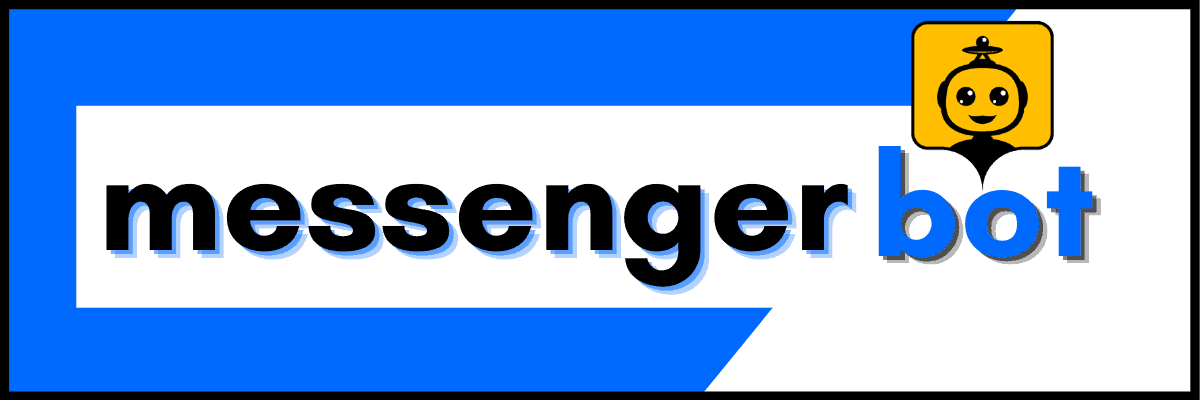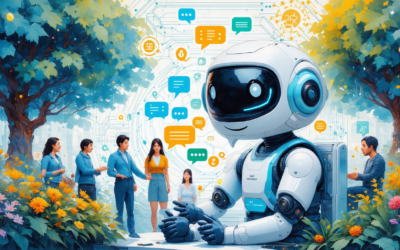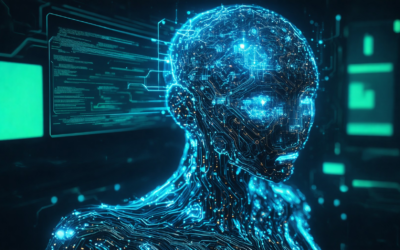In today’s fast-paced digital landscape, hybrid chatbots are revolutionizing the way businesses interact with customers. These innovative solutions combine the best features of various types of chatbots, offering a seamless blend of automated responses and human-like interaction. In this article, we will delve into the different types of chatbots, exploring their unique functionalities and the significant benefits they bring to customer service. We will answer critical questions such as, “What are the 4 types of chatbots?” and “What is an example of a hybrid chatbot?” Additionally, we will examine the availability of free AI chatbot options and compare traditional AI chatbots with advanced models like ChatGPT. As we navigate through the landscape of chatbot types, you will gain insights into how hybrid chatbots and generative AI are enhancing customer interactions, ultimately paving the way for improved customer experiences and business growth. Join us as we uncover the transformative power of hybrid chatbots in the realm of customer engagement.
What are the 4 types of chatbots?
Understanding the Different Types of Chatbots
Chatbots have become an essential tool for businesses looking to enhance customer engagement and streamline communication. Understanding the types of chatbots available can help organizations choose the right solution for their needs. Here are the four main chatbot types:
- Menu-based Chatbots: These are the simplest form of chatbots, designed to guide users through a predefined set of options. Users interact by selecting from a menu, making it easy for businesses to direct conversations toward specific outcomes. This type is commonly used in customer service for FAQs and basic inquiries.
- Rule-based Chatbots: Building on the menu-based model, rule-based chatbots utilize a more complex decision tree structure. They operate on a set of predefined rules and can handle specific queries based on keywords or phrases. These chatbots are effective for straightforward tasks but may struggle with nuanced conversations. According to a study by IBM, rule-based systems can improve response accuracy by 30% when properly configured.
- AI-powered Chatbots: Leveraging natural language processing (NLP) and machine learning, AI-powered chatbots can understand and respond to user queries in a more human-like manner. They learn from interactions, allowing for improved responses over time. Research indicates that businesses using AI chatbots can enhance customer engagement by up to 80%.
- Hybrid Chatbots: Combining the strengths of rule-based and AI-powered chatbots, hybrid chatbots offer a versatile solution. They can handle simple queries through predefined rules while also utilizing AI for more complex interactions. This adaptability makes them suitable for a wide range of applications, from customer support to e-commerce. A report from Forrester highlights that hybrid chatbots can reduce operational costs by 25% while improving customer satisfaction.
Overview of Hybrid Chatbots and Their Unique Features
Hybrid chatbots stand out among the different types of chatbots due to their ability to blend rule-based and AI functionalities. This unique combination allows them to efficiently manage both simple and complex interactions, making them a popular choice for businesses aiming to enhance customer experiences.
Some of the key features of hybrid chatbots include:
- Versatility: They can handle a wide range of inquiries, from basic FAQs to more complex customer service issues.
- Cost Efficiency: By automating responses and reducing the need for human intervention, hybrid chatbots can significantly lower operational costs.
- Continuous Learning: With AI capabilities, these chatbots improve over time by learning from user interactions, leading to more accurate and relevant responses.
- Enhanced User Engagement: By providing quick and accurate answers, hybrid chatbots can boost customer satisfaction and engagement.
For businesses looking to implement a hybrid chatbot, exploring various chat bot options can lead to improved customer interactions and operational efficiency.

Is There a Free AI Chatbot?
Yes, there are several free AI chatbots available that offer various features and functionalities. These chatbot types cater to different needs, from casual inquiries to more complex interactions. Here are some notable options:
- Perplexity AI: This free AI chatbot is connected to the internet, allowing it to provide real-time information and sources for its responses. It features an intuitive user interface that enhances user experience. Perplexity AI is particularly useful for users seeking accurate and sourced information quickly.
- ChatGPT: OpenAI offers a free version of ChatGPT, which is widely recognized for its conversational abilities and versatility. While the free version has limitations compared to the paid subscription, it still provides users with a robust AI experience for casual inquiries and assistance.
- Google Bard: This AI chatbot from Google is designed to assist users with a variety of tasks, from answering questions to generating creative content. Bard is free to use and leverages Google’s extensive data resources to provide informative responses.
- Replika: While primarily known as a personal AI companion, Replika offers a free version that allows users to engage in meaningful conversations. It can help with emotional support and companionship, making it a unique option among AI chatbots.
- Chatbot.com: This platform provides a free tier that allows users to create and interact with AI chatbots for various purposes, including customer service and personal use. It offers a user-friendly interface and customizable options.
These AI chatbots are excellent resources for users looking for free options to engage with artificial intelligence for various needs. For more detailed comparisons and features, you can refer to sources like ZDNET and TechCrunch, which regularly review and update information on the latest AI technologies.
Exploring Hybrid Chatbot Free Options
When considering hybrid chatbots, many platforms offer free trials or basic versions that allow businesses to explore their capabilities without a financial commitment. For instance, Messenger Bot provides a free trial that enables users to experience its advanced features, such as automated responses and workflow automation. This is particularly beneficial for businesses looking to enhance customer engagement without upfront costs.
Additionally, platforms like Brain Pod AI offer various AI services, including free demos that showcase the functionalities of their hybrid chatbots. These options allow businesses to assess the effectiveness of different types of chatbots before making a decision.
Benefits of Using Free AI Chatbots for Businesses
Utilizing free AI chatbots can significantly benefit businesses in several ways:
- Cost-Effective Solutions: Free AI chatbots provide an opportunity for businesses to implement automation without incurring high costs. This is especially advantageous for startups and small businesses.
- Enhanced Customer Engagement: By integrating free chatbots, businesses can improve their customer service capabilities, offering immediate responses and support, which can lead to higher customer satisfaction.
- Testing and Evaluation: Free options allow businesses to test various chatbot types and functionalities to determine what best fits their needs and customer preferences.
- Scalability: Many free chatbots offer scalable features that can grow with the business, allowing for easy upgrades to paid versions as needs expand.
Incorporating free AI chatbots into your business strategy can lead to improved operational efficiency and customer satisfaction, making them a valuable asset in today’s digital landscape. For more insights on enhancing customer support with AI, check out our article on elevating customer support with conversational AI chatbots.
What is the difference between AI chatbot and ChatGPT?
Understanding the differences between various types of chatbots is crucial for businesses looking to enhance their customer interactions. In this section, we will explore the distinctions between traditional AI chatbots and ChatGPT, highlighting their unique features and capabilities.
Comparing AI Chatbots and ChatGPT: Key Differences
When evaluating chatbot types, it’s essential to recognize how traditional AI chatbots differ from ChatGPT in several key areas:
- Response Quality:
- Traditional Chatbots: Typically rely on predefined scripts and rule-based systems, leading to generic and often repetitive responses. They are designed for specific tasks and can struggle with understanding nuanced language or context.
- ChatGPT: Utilizes advanced natural language processing (NLP) and machine learning techniques, enabling it to generate contextually relevant and personalized responses. This adaptability allows ChatGPT to handle a wider range of inquiries and engage in more meaningful conversations.
- Learning and Adaptation:
- Traditional Chatbots: Limited in their ability to learn from interactions. They require manual updates to improve their responses, which can be time-consuming and inefficient.
- ChatGPT: Built on the GPT (Generative Pre-trained Transformer) architecture, it continuously learns from vast datasets, allowing it to improve over time and adapt to new conversational patterns and user preferences.
- Complexity of Interaction:
- Traditional Chatbots: Often fail to understand complex queries or multi-turn conversations, leading to frustration for users seeking detailed information.
- ChatGPT: Capable of maintaining context over multiple exchanges, making it suitable for more complex dialogues. It can interpret subtleties in language, such as humor or sarcasm, enhancing user experience.
- Use Cases:
- Traditional Chatbots: Commonly used for customer service inquiries, FAQs, and simple tasks like booking appointments or providing basic information.
- ChatGPT: Versatile in application, used for creative writing, tutoring, brainstorming ideas, and even coding assistance, showcasing its ability to engage in diverse topics.
- Technological Foundation:
- Traditional Chatbots: Often built on simpler algorithms and may lack the computational power to process large datasets effectively.
- ChatGPT: Leverages deep learning techniques and extensive training on diverse internet text, resulting in a more robust understanding of language and context.
In conclusion, the primary distinction between traditional chatbots and ChatGPT lies in their ability to understand and generate human-like responses. ChatGPT’s advanced NLP capabilities and learning mechanisms position it as a more effective tool for engaging users in meaningful conversations. For further reading on the advancements in AI and NLP, refer to sources such as the Journal of Artificial Intelligence Research and OpenAI’s research publications.
Understanding the Types of AI Chatbots Available Today
As we delve deeper into the different types of chatbots, it’s important to categorize them based on their functionalities and applications. Here are some prevalent types of AI chatbots:
- Rule-Based Chatbots: These chatbots follow predefined rules and scripts to respond to user queries. They are effective for straightforward tasks but can struggle with complex interactions.
- AI-Powered Chatbots: Utilizing machine learning and NLP, these chatbots can learn from interactions and provide more personalized responses, adapting to user preferences over time.
- Hybrid Chatbots: Combining rule-based and AI capabilities, hybrid chatbots can handle a wider range of inquiries while maintaining efficiency in simpler tasks. They are increasingly popular for businesses looking to enhance customer service.
- Voice-Activated Chatbots: These chatbots use voice recognition technology to interact with users, making them ideal for applications in smart devices and virtual assistants.
Understanding these types of chatbots can help businesses choose the right solution for their needs. For more insights on how AI chatbots are transforming customer service, check out our article on Revolutionizing Customer Support.
What is Generative AI Chatbot?
Generative AI chatbots are advanced artificial intelligence systems designed to create human-like text responses based on user inputs. These chatbots utilize deep learning models, particularly those based on transformer architectures, to understand context and generate coherent and contextually relevant replies. As businesses increasingly adopt various types of chatbots, generative AI chatbots stand out for their ability to enhance customer interactions significantly.
The Rise of Generative AI Chatbots in Customer Interaction
The emergence of generative AI chatbots marks a pivotal shift in how businesses engage with customers. These chatbots leverage Natural Language Processing (NLP) techniques to comprehend and interpret user queries, allowing for more meaningful interactions. Unlike traditional chatbots that rely on pre-defined responses, generative AI chatbots can produce unique content, making conversations more dynamic and engaging.
Key features of generative AI chatbots include:
- Content Generation: They can create responses that are not only relevant but also tailored to the user’s context, enhancing the overall experience.
- Learning Capabilities: These chatbots continuously learn from interactions, improving their responses over time through machine learning algorithms.
- Applications: They are widely used in customer support, content creation, and as personal assistants, providing personalized recommendations and assistance.
Recent advancements in generative AI, such as OpenAI’s GPT-3 and Google’s BERT, have significantly improved the capabilities of chatbots, enabling them to handle complex queries and provide more accurate information. For further reading on the implications and technology behind generative AI chatbots, refer to sources like the Stanford Teaching Commons and research papers published in AI journals.
How Generative AI Enhances Hybrid Chatbot Functionality
Hybrid chatbots combine the strengths of both rule-based and generative AI systems, offering a versatile solution for businesses. By integrating generative AI capabilities, hybrid chatbots can provide more personalized and context-aware interactions. This integration allows for:
- Improved User Experience: Users receive responses that feel more natural and relevant, enhancing satisfaction and engagement.
- Efficient Handling of Complex Queries: Hybrid chatbots can manage a wider range of inquiries, from simple FAQs to more intricate customer service issues.
- Scalability: As businesses grow, hybrid chatbots can adapt to increased interaction volumes without compromising response quality.
Incorporating generative AI into hybrid chatbots not only boosts their functionality but also positions businesses to meet evolving customer expectations in a competitive landscape. For more insights on how hybrid chatbots can transform customer interactions, explore our benefits and examples.

What is an example of a hybrid chatbot?
A hybrid chatbot combines rule-based and AI-powered functionalities to enhance user interaction. For instance, in an online retail environment, a hybrid chatbot can initially assist customers by answering frequently asked questions about sizing and return policies using predefined rules. Once the customer engages further, the chatbot can leverage AI to analyze the user’s purchase history and browsing behavior, providing personalized recommendations for outfits or accessories that align with their preferences.
Real-World Hybrid Chatbot Examples in Action
Hybrid chatbots are increasingly being adopted across various industries due to their versatility and effectiveness. One notable example is the Brain Pod AI, which offers a sophisticated AI-driven chatbot that can handle customer inquiries while also providing personalized recommendations based on user data. This dual approach not only improves customer satisfaction but also enhances engagement by delivering relevant content tailored to individual preferences.
Another example can be found in the e-commerce sector, where platforms like Shopify utilize hybrid chatbots to streamline customer service. These chatbots can handle common queries about order status and product details while also using AI to suggest complementary products based on the customer’s shopping behavior. This integration of different types of chatbots allows businesses to maintain a high level of customer service without overwhelming their support teams.
Analyzing Successful Implementations of Hybrid Bots
Successful implementations of hybrid chatbots often highlight their ability to improve operational efficiency and customer experience. For instance, companies that have integrated hybrid chatbots into their customer support systems report significant reductions in response times and increased customer satisfaction ratings. By combining the speed of rule-based responses with the adaptability of AI, these chatbots can effectively address a wide range of customer inquiries.
Moreover, the data collection capabilities of hybrid chatbots enable businesses to gain insights into customer preferences and behaviors. This information can be leveraged to refine marketing strategies and enhance product offerings. For more insights on how hybrid chatbots are transforming customer interactions, check out our article on Revolutionizing Customer Support.
Is Siri a Chatbot?
Siri is not classified as a traditional chatbot; rather, it is a digital assistant or personal assistant. Here’s a detailed breakdown of the distinctions and functionalities:
Definition and Functionality
- Digital Assistants: Siri and Google Assistant are designed to perform a wide range of tasks using voice recognition and natural language processing. They can manage schedules, send messages, control smart home devices, and provide information based on user queries.
- Chatbots: In contrast, chatbots are primarily designed for text-based interactions, often limited to specific tasks such as customer service inquiries or simple information retrieval.
Technology Behind Siri
Siri utilizes advanced machine learning algorithms and artificial intelligence to understand and respond to user commands. This technology allows for context-aware responses and the ability to learn user preferences over time source: Apple Developer Documentation.
User Interaction
While both Siri and chatbots can engage in conversation, Siri’s capabilities extend beyond simple Q&A interactions. It can execute complex commands and integrate with various applications, making it more versatile than standard chatbots source: TechCrunch.
Applications and Use Cases
Siri is integrated into Apple devices, providing seamless interaction across platforms such as iPhone, iPad, and Mac. It is used for tasks ranging from setting reminders to providing navigation assistance, showcasing its multifunctionality source: Apple Support.
Conclusion
In summary, while Siri may be grouped with chatbots under the broader category of “bots,” it is more accurately described as a digital assistant due to its advanced capabilities and broader range of functions. This distinction is crucial for understanding the evolving landscape of AI-driven applications.
Conclusion: The Future of Hybrid Chatbots in Customer Service
As we look ahead, the role of hybrid chatbots in customer service is set to expand significantly. These innovative tools combine the strengths of various types of chatbots, offering businesses a versatile solution to enhance customer interactions. By integrating both rule-based and AI-driven functionalities, hybrid chatbots can provide personalized responses while efficiently managing high volumes of inquiries.
The Impact of Hybrid Chatbots on Customer Experience
Hybrid chatbots are revolutionizing the customer experience by delivering timely and relevant responses. They can seamlessly transition between automated replies and human intervention, ensuring that customers receive the support they need without unnecessary delays. This capability not only improves customer satisfaction but also increases engagement rates. For instance, businesses utilizing hybrid chatbots can expect to see a reduction in response times and an increase in resolution rates, leading to a more positive overall experience.
Embracing Different Chatbot Types for Business Growth
To fully leverage the potential of hybrid chatbots, businesses must embrace the various types of chatbots available today. Understanding the differences among chatbot types—from simple FAQ bots to advanced AI-driven solutions—enables organizations to select the right tools for their specific needs. By integrating hybrid chatbots into their customer service strategies, companies can not only streamline operations but also foster deeper connections with their customers. This approach positions businesses for sustainable growth in an increasingly competitive landscape.
For more insights on how hybrid chatbots can transform your customer service, explore our detailed guide on the benefits and examples of conversational AI chatbots.




